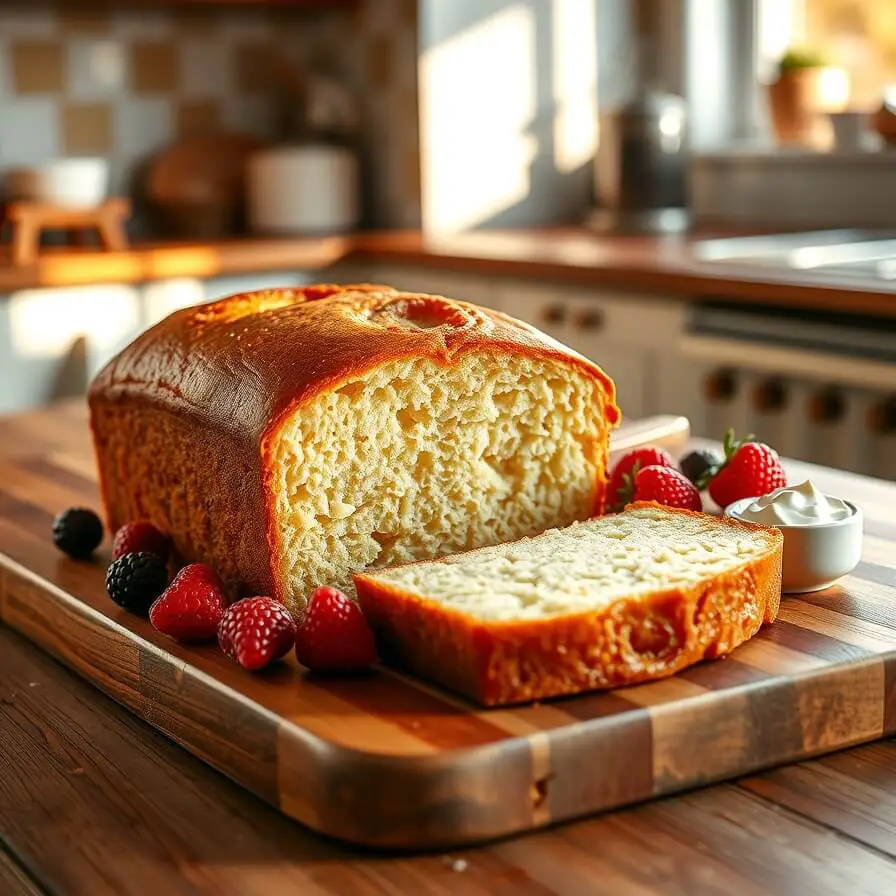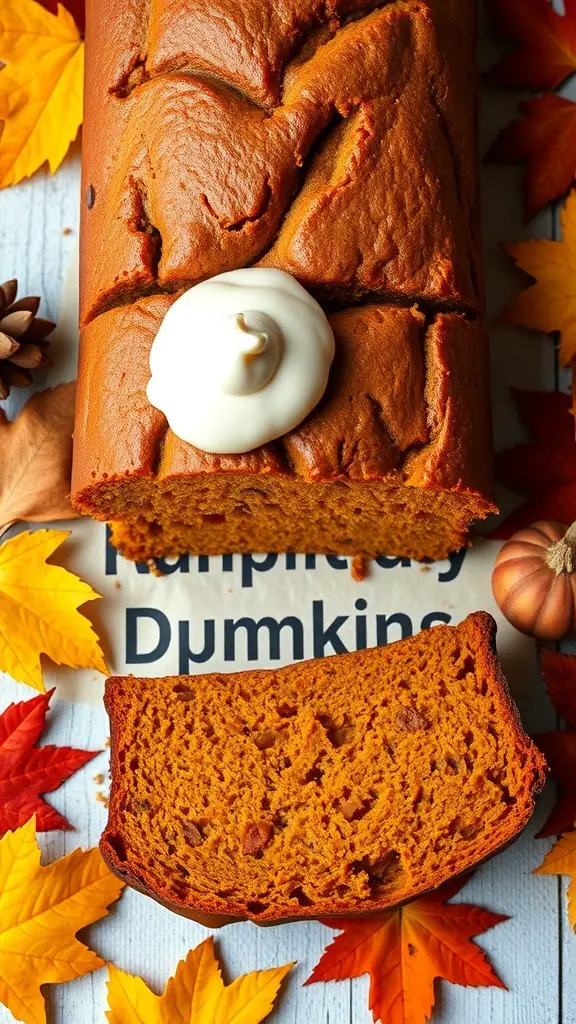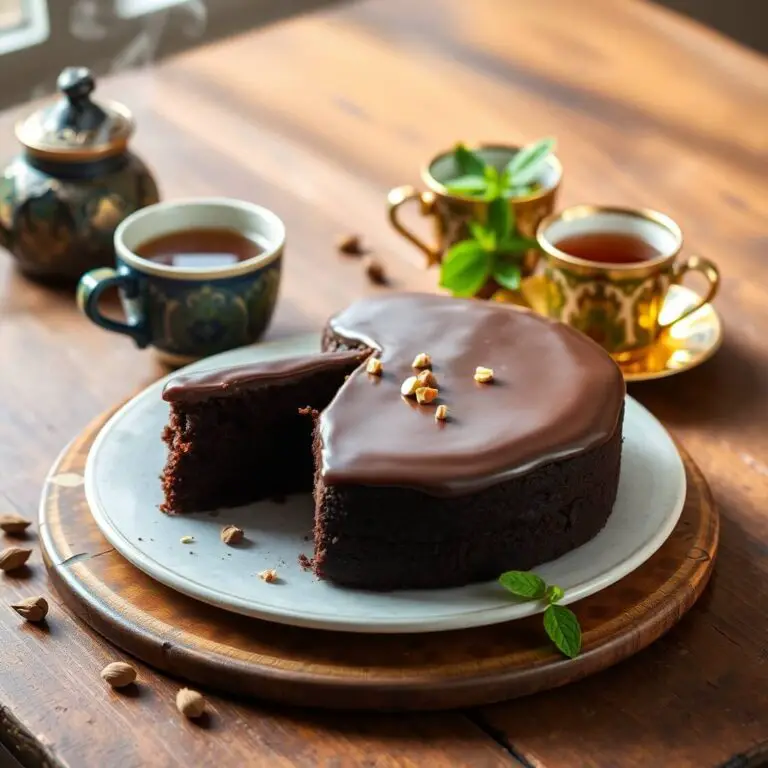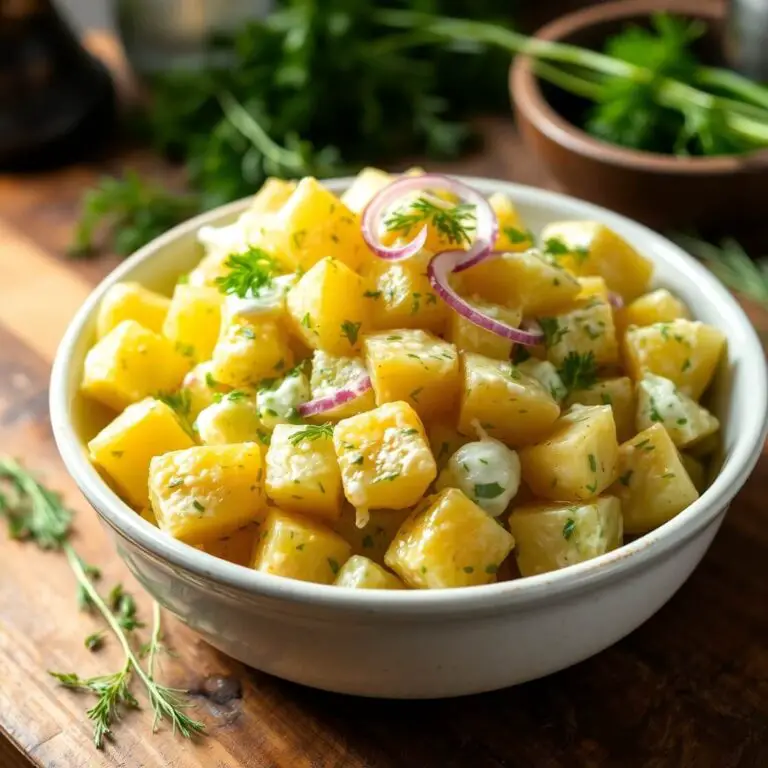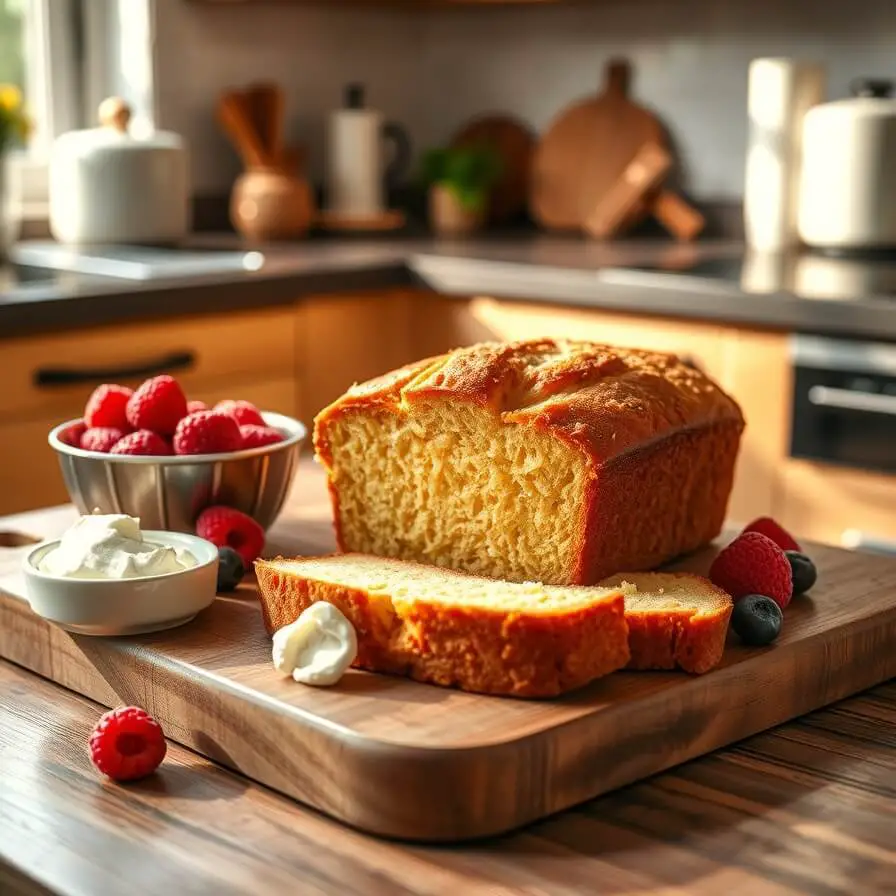
There’s something magical about the smell of a freshly baked pound cake wafting through the house. I still remember the first time I tried baking one—it was for a Sunday afternoon tea with my grandmother. She always said that a good pound cake is simple but luxurious, a dessert that feels like a warm hug. I was nervous, thinking that it had to be perfect, but the moment I sliced into that golden loaf and tasted its buttery, tender crumb, I was hooked. Since then, I’ve baked this recipe countless times, each loaf carrying its own little memory—birthday celebrations, quiet nights with a cup of tea, and even a few impromptu gatherings where neighbors ended up sharing in the sweetness.
What I love about this pound cake is that it’s comforting yet elegant. It doesn’t require fancy ingredients or complicated techniques, but it delivers a rich flavor and tender texture that always impresses. I like to think of it as one of those recipes that doesn’t just fill the belly but fills the heart.
Why I Love This Recipe
This pound cake isn’t just your run-of-the-mill dessert. What makes it special is the perfect balance between richness and lightness. Unlike heavier cakes that sometimes feel dense, this recipe produces a moist interior with a delicate crumb that melts in your mouth.
I also adore how versatile it is. You can enjoy it plain with a cup of tea, dusted lightly with powdered sugar, or dressed up with fresh berries and a drizzle of glaze. Every bite feels buttery, comforting, and nostalgic, almost like a taste of home. For me, this recipe captures the essence of baking simplicity and elegance. It’s a recipe I return to whenever I want something classic and reliably delicious. The buttery aroma fills the kitchen, the golden crust is perfect, and the soft, tender interior is exactly how a pound cake should be.
Ingredients for Pound Cake
For this recipe, you don’t need anything exotic—just everyday ingredients that come together to make something extraordinary. Here’s what you’ll need:
- Butter: Unsalted butter is ideal for this recipe. I always make sure it’s at room temperature so it blends smoothly with the sugar and helps create that tender crumb we all love.
- Sugar: Granulated sugar is the classic choice. Creaming it with butter gives the cake its lift and light texture.
- Eggs: Fresh large eggs, also at room temperature, are essential. They add richness and help the cake rise evenly.
- Flour: All-purpose flour works perfectly here. It gives the cake structure without making it heavy. Sifting it before mixing ensures a smooth, lump-free batter.
- Baking powder: This little bit of leavening gives the cake a gentle lift without affecting its delicate texture.
- Salt: Just a pinch enhances the buttery flavor and balances the sweetness.
- Vanilla extract: Pure vanilla extract elevates the flavor, adding warmth and depth to each bite.
- Milk or cream: A splash of milk or cream keeps the cake moist and tender. I often use whole milk for a richer texture, but you can use any milk you prefer.
These simple ingredients, when combined with a little patience and care, turn into a loaf of pound cake that feels indulgent yet approachable.
How Much Time Will You Need?
This pound cake is not a quick-fix dessert—it’s the kind of recipe that rewards patience. Here’s a rough estimate:
- Preparation time: 15–20 minutes to gather and measure ingredients, cream butter and sugar, and mix the batter.
- Baking time: 55–65 minutes in the oven. You’ll want to keep an eye on it, but avoid opening the oven too often.
- Cooling time: About 20 minutes in the pan, then another 10–15 minutes on a wire rack before slicing.
In total, you’re looking at around an hour and a half from start to finish, making it perfect for a relaxed afternoon bake when you’re not in a rush but want something special.
How to Make This Pound Cake
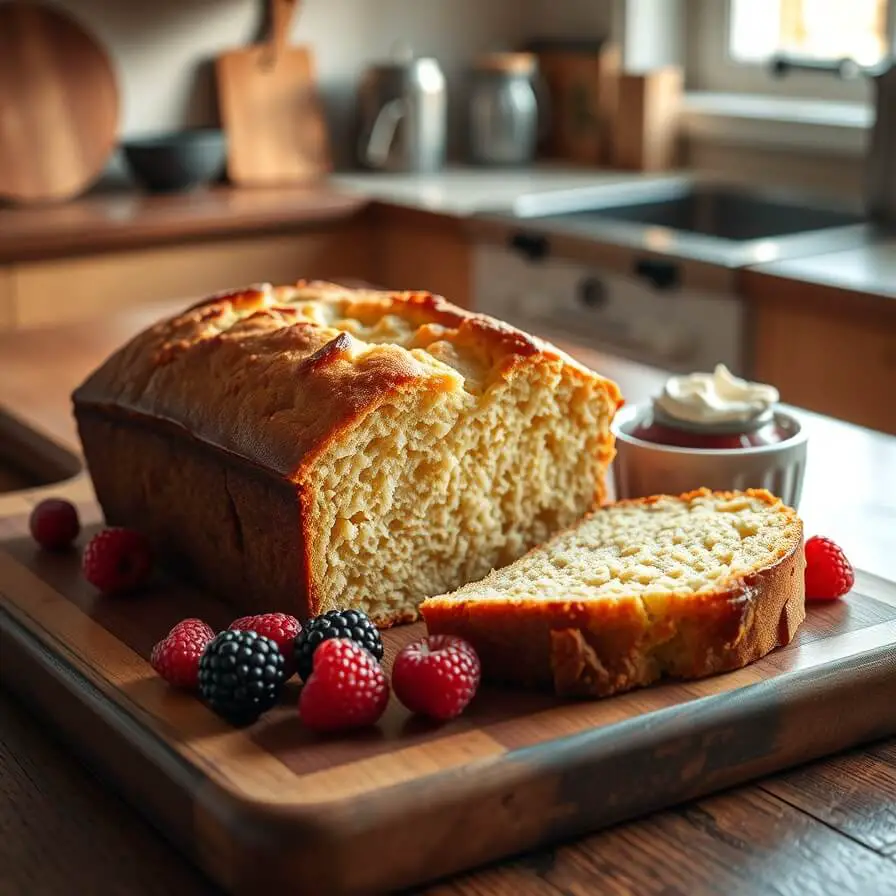
Step – 1: Preheat your oven to 350°F (175°C). Grease and flour a 9×5-inch loaf pan, or line it with parchment paper for easy removal.
Step – 2: In a large mixing bowl, cream together the butter and sugar until the mixture is light and fluffy. This usually takes about 3–5 minutes with a hand mixer. The lightness of the butter and sugar mixture is what makes the cake airy.
Step – 3: Add the eggs one at a time, beating well after each addition. Make sure each egg is fully incorporated before adding the next. This helps maintain the batter’s smooth consistency.
Step – 4: Stir in the vanilla extract. Take a moment here to enjoy the warm aroma—it’s one of my favorite parts of baking pound cake.
Step – 5: In a separate bowl, whisk together the flour, baking powder, and salt. Gradually add the dry ingredients to the wet mixture, alternating with the milk. Begin and end with the flour mixture. Mix gently, just until combined. Overmixing can make the cake dense, so handle the batter with care.
Step – 6: Pour the batter into your prepared loaf pan and smooth the top with a spatula.
Step – 7: Bake in the preheated oven for 55–65 minutes, or until a toothpick inserted into the center comes out clean. The top should be golden brown and slightly firm to the touch.
Step – 8: Allow the cake to cool in the pan for 20 minutes, then transfer it to a wire rack to cool completely. This helps maintain its moist texture while forming a slightly crisp crust.
Substitutions
One of the joys of baking is making a recipe your own. Here are some substitutions that can enhance or tweak this pound cake:
- Butter alternatives: If you prefer, you can use a high-quality margarine or coconut oil, but remember it will slightly change the flavor and texture.
- Milk alternatives: Almond milk or oat milk can work if you’re looking for a dairy-free option. Whole milk gives the richest texture, though.
- Sugar swaps: For a less sweet option, you can use coconut sugar or a sugar substitute like erythritol for a lower-calorie version.
- Add-ins: For extra flavor, fold in chocolate chips, fresh berries, or a handful of chopped nuts. Lemon or orange zest adds a bright, fragrant note.
Best Side Dishes for Pound Cake
Pound cake is lovely on its own, but pairing it with simple sides can elevate the experience:
- Fresh berries or a mixed fruit salad
- A scoop of vanilla or berry-flavored ice cream
- A dollop of whipped cream with a drizzle of honey
These sides complement the buttery richness of the pound cake without overpowering its delicate flavor.
Serving and Presentation Tips
When it comes to serving pound cake, I like to keep things simple but elegant. There’s no need to overcomplicate a classic—sometimes less is more. One of my favorite ways to present it is by slicing it into thick, generous pieces and arranging them on a beautiful plate or wooden board. A light dusting of powdered sugar adds a touch of sophistication without hiding the cake’s golden crust.
For a more indulgent presentation, I love topping slices with fresh berries and a spoonful of whipped cream. Drizzling a little warm caramel or chocolate sauce can turn a humble pound cake into a showstopper dessert for guests. If I’m serving it for a casual afternoon tea, I often pair each slice with a small cup of hot tea or coffee—there’s something so cozy about that combination. Even a dollop of Greek yogurt or a smear of fruit preserves can make each bite feel like a treat. Presentation doesn’t have to be complicated; a few thoughtful touches make all the difference.
Tips and Tricks to Make This Recipe Even Better
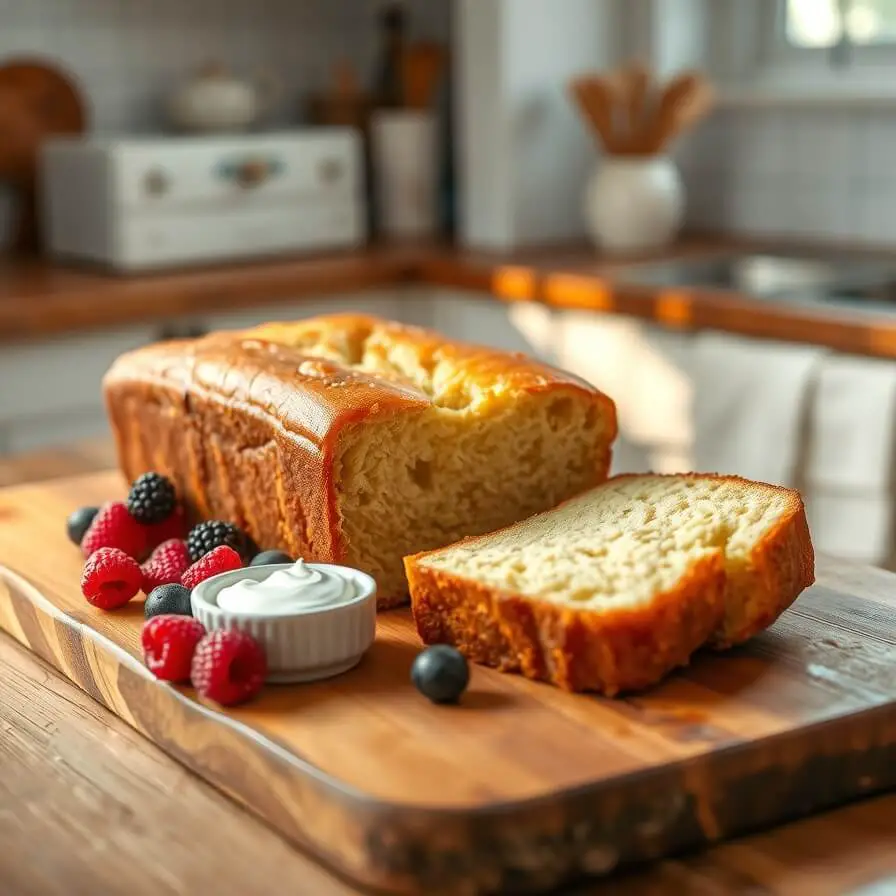
Here are some tips I’ve learned over the years to ensure your pound cake turns out perfectly every time:
- Room temperature ingredients: Always use butter, eggs, and milk at room temperature. Cold ingredients can make the batter lumpy and affect the cake’s texture.
- Don’t overmix: Once you add the flour, mix just until combined. Overmixing can develop gluten, resulting in a dense cake instead of a tender one.
- Check your oven temperature: Ovens can be tricky. I recommend using an oven thermometer to ensure your temperature is accurate. Too hot, and the cake will brown too quickly; too cool, and it may not rise properly.
- Pan preparation: Greasing and flouring the pan—or using parchment paper—prevents sticking and makes removal effortless.
- Cool before slicing: Resist the temptation to slice immediately. Allowing the cake to cool slightly helps it set, keeping the crumb intact when you cut.
These little tricks have saved me from many baking mishaps and can elevate your pound cake from good to absolutely unforgettable.
Common Mistakes to Avoid
Even with a simple recipe like this, a few common mistakes can affect the outcome:
- Using cold ingredients: As I mentioned, cold butter or eggs can prevent proper mixing, leading to a dense texture.
- Overbaking: Keep an eye on your cake during the last 10 minutes of baking. Overbaking dries it out, so always test with a toothpick.
- Skipping the sift: Sifting the flour and baking powder ensures a smooth batter and prevents clumps.
- Overmixing after adding flour: This can make the cake tough instead of tender. Mix gently and just until combined.
- Ignoring cooling time: Cutting too soon can cause the cake to crumble and lose its structure.
Avoiding these mistakes will help your pound cake come out perfectly every single time.
How to Store It
Storing pound cake properly ensures it stays moist and delicious:
- Room temperature: Wrap the cooled cake in plastic wrap or place it in an airtight container. It will keep for about 3–4 days.
- Refrigeration: If you want it to last a bit longer, store it in the fridge in an airtight container for up to a week. Bring it back to room temperature before serving to enjoy its tender crumb.
- Freezing: Pound cake freezes beautifully. Wrap it tightly in plastic wrap and aluminum foil, then freeze for up to 3 months. Thaw at room temperature when ready to enjoy.
Proper storage maintains the cake’s buttery texture and flavor, making it perfect for make-ahead baking or gifting.
Frequently Asked Questions
Can I make this pound cake gluten-free?
Yes! Substitute the all-purpose flour with a gluten-free flour blend. You may need to adjust the liquid slightly to maintain moisture.
Can I add flavors like lemon or chocolate?
Absolutely. Add lemon zest or cocoa powder for a different twist. You can also fold in chocolate chips or berries for extra flavor.
Can I make this recipe dairy-free?
Yes. Use plant-based butter and almond or oat milk as substitutes. The texture will remain tender and delicious.
Can I bake this in a bundt pan instead of a loaf pan?
Definitely! Just increase the baking time slightly and test with a toothpick to ensure it’s cooked through.
How can I make the cake extra moist?
Add a tablespoon of sour cream or Greek yogurt to the batter. It enhances moisture and richness without changing the flavor significantly.

Pound Cake Recipe
- Total Time: 1 hour 20 minutes
- Yield: 8–10 1x
- Diet: Vegetarian
Description
There’s nothing quite like a homemade pound cake. This recipe is rich, buttery, and tender—a classic dessert that brings warmth to any gathering. Perfect for afternoon tea, brunch, or as a simple treat with coffee, it’s a recipe I’ve baked countless times and always comes out perfect. From its golden crust to its melt-in-your-mouth interior, this pound cake embodies comfort and elegance in every bite.
Ingredients
- 1 cup (226 g) unsalted butter, room temperature
- 1 ½ cups (300 g) granulated sugar
- 4 large eggs, room temperature
- 2 ½ cups (315 g) all-purpose flour
- 2 tsp baking powder
- ½ tsp salt
- 1 tsp pure vanilla extract
- ½ cup (120 ml) whole milk
Instructions
- Preheat oven to 350°F (175°C). Grease and flour a 9×5-inch loaf pan.
- Cream butter and sugar until light and fluffy.
- Add eggs one at a time, mixing well after each addition. Stir in vanilla.
- In a separate bowl, whisk flour, baking powder, and salt. Gradually add to wet mixture, alternating with milk. Mix gently.
- Pour batter into prepared pan and smooth the top. Bake 55–65 minutes, or until a toothpick comes out clean.
- Cool 20 minutes in pan, then transfer to wire rack to cool completely before slicing.
Notes
- For extra moisture, fold in a tablespoon of sour cream or Greek yogurt.
- Add zest, berries, or chocolate chips to customize your cake.
- Use room-temperature ingredients for best results.
- Prep Time: 15–20 minutes
- Cook Time: 55–65 minutes
- Category: Dessert
- Method: Baking
- Cuisine: American
Nutrition
- Serving Size: 8–10
- Calories: 320
- Sugar: 20g
- Sodium: 120mg
- Fat: 18g
- Saturated Fat: 11g
- Unsaturated Fat: 5g
- Trans Fat: 0g
- Carbohydrates: 37g
- Fiber: 1g
- Protein: 4g
- Cholesterol: 95mg

